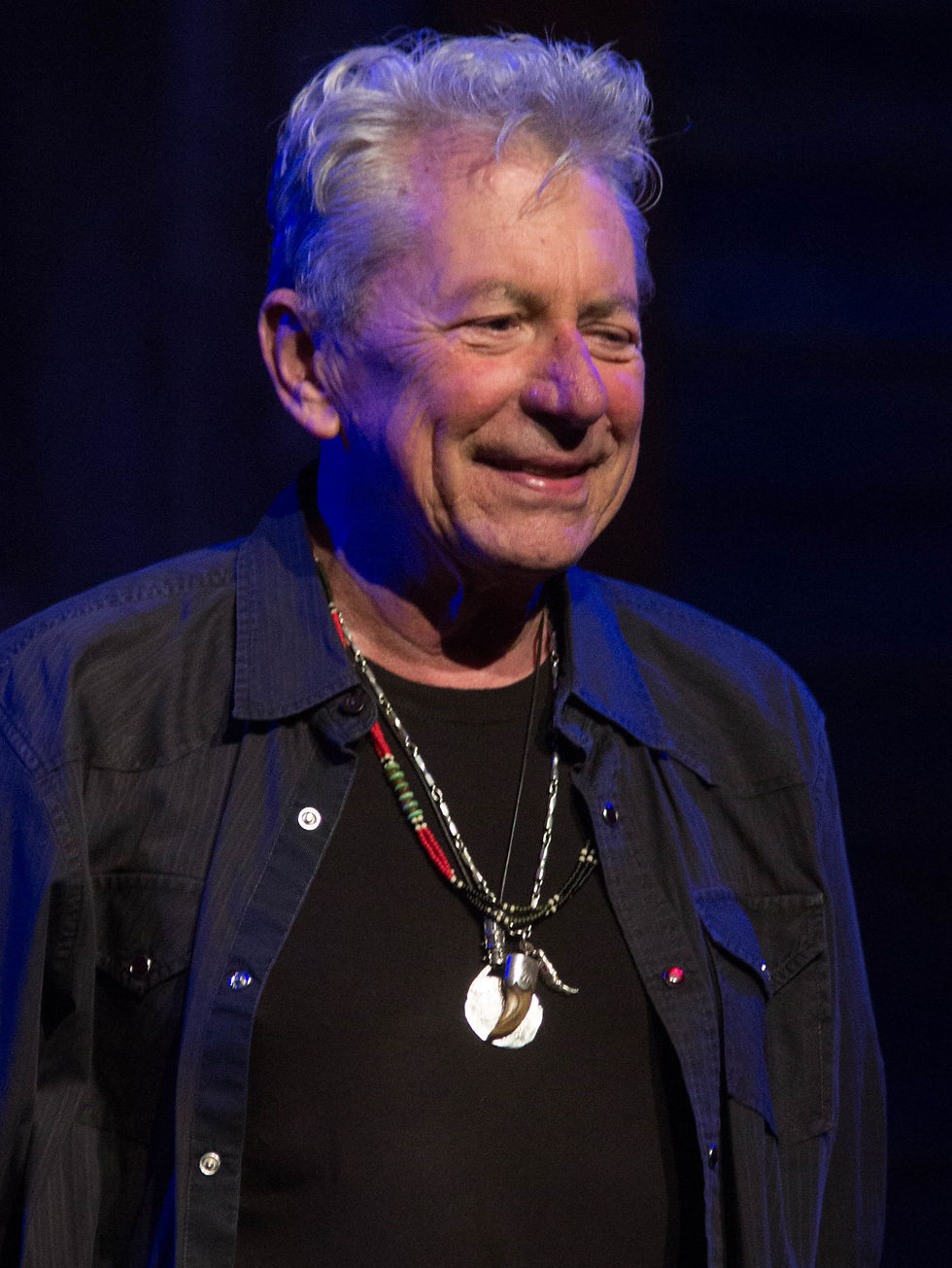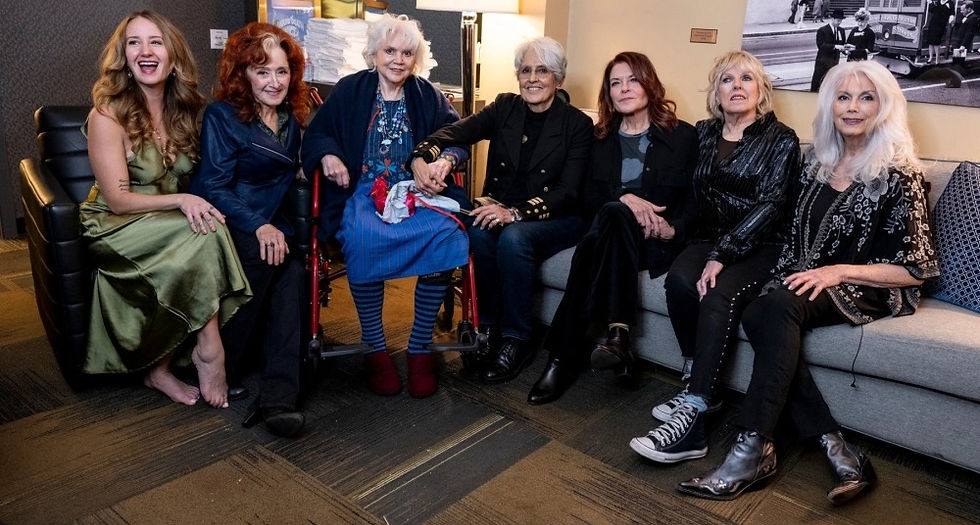Cat Power Sings Dylan An Inventive Gem
- cutlercomms
- Nov 11, 2023
- 5 min read

And the award for the most inventive covers album of the year – maybe all-time - goes to … Chan Marshall for her November 10 release Cat Power Sings Dylan: The 1966 Royal Albert Hall Concert.
Such an adulation may be entirely fictitious! But American blues-influenced singer-songwriter Chan Marshall - a.k.a. Cat Power - deserves true recognition for her wonderful song-by-song rendition of Dylan’s historic May 1966 performance at the Manchester Trade Hall, later released as part of Dylan’s Bootleg Series under the erroneous title “Royal Albert Hall Concert.”
Marshall’s vision to re-enact one of the most famous concerts ever recorded is to be applauded in itself. She did so live at London’s Royal Albert Hall in November 2022, recording all 15 songs in the exact order as Dylan did in Manchester 56 years earlier.
And to stay true to Dylan’s intentions all those years ago, Marshall performs the first half of the set – ending with “Mr Tambourine Man” – as an acoustic presentation before going electric with a full band for the final eight numbers, just as Dylan did with the Hawks (later to become the Band) at the time. For 1966 would be the year that Dylan would transition from folk to pop and each concert during a world-wide tour was divided as such – much to the consternation of his original fan base.
The bootleg album is an extraordinary document to Dylan’s electric conversion. But the concert itself has been somewhat overshadowed by a much-publicised spat between Dylan and his once-adoring folk fans.
As he was about to deliver the show-closer “Like a Rolling Stone,” a fan shouted: “Judas.” Dylan answered back, saying “I don’t believe you.” He then pauses, as the crowd heckling intensifies, before adding: “You’re a liar.” And he further aggravates the fan ire by turning to the band and declaring: “Play it fuckin’ loud.” At the end of a majestic version of “Like A Rolling Stone” there is - to his credit - wide applause and Dylan acknowledges it with a simple “thank you.”
This now-legendary confrontation did not make it onto the official bootleg release in 1998. But film footage of the “Judas” incident was later discovered and used at the end of Martin Scorsese’s 2005 television documentary No Direction Home. Indeed, it was the existence on film of this exchange that further clarified the true location of the recorded concert.
As might be expected, there was a re-enactment of the famous scene at Cat Power’s Royal Albert Hall show when an audience member - apparently unsolicited - shouted “Judas.” But the timing was out. It came before the penultimate song, “Ballad of a Thin Man,” and not after as happened in the original Manchester concert. She wasted little time with her – apparently improvised – response: “Jesus.”
And yes, unlike the Dylan bootleg, this modern two-word spat does make it on the Cat Power Sings Dylan album.
Marshall provided some perspective in a statement prior to the album’s release. “It was something impulsive. I wasn’t expecting the audience to recreate their part of the original show as well, but then I wanted to set the record straight – in a way, Dylan is a deity to all of us who write songs.”
.
Marshall made the decision to do her Dylan-re-enactment concert on somewhat of a whim.
In a recent profile for Vogue magazine, she explained how she had a long-held desire to play a show in London. “And one day my manager called me, and he said: ‘We got a show – we got one night, November 5th, London.’ And I was thinking, Guy Fawkes Night? That’s a great night to have a show. And he said: ‘Royal Albert Hall – can you do it?’ And immediately, I said yeah but I only want to do Dylan’s songs from that concert. And then we were both very, very quiet.”
In another interview with No Depression, Marshall was somewhat more explicit: “I’m 50 years old and I can play Royal Albert Hall on Guy Fawkes Day, fuck yeah I want to do that record. It was the moment when he turned people on and turned people off. There was no bigger audience for him to tell people to get with it. He toured for six months and didn’t give up, people were calling him a fuckin’ traitor and saying: ‘What about the movement Bob?’ And he went: ‘It’s bigger than what you think.”
She wanted her own rendition of the famous concert to somewhat reflect the vitality Dylan was introducing to not only his own music at the time, but the music world itself.
“It’s really great to do this while Bob is still walking the earth, to celebrate him. He’s given us this gift and that’s expanded the universe. Bob expanded the movement,” she told No Depression. “Music is a great unifier, and in this moment, it’s really strategically necessary. It’s needed now. We still don’t have an Equal Rights Amendment, and we haven’t addressed climate change, we still don’t have a world run by women.”
Marshall is no stranger to exploring the music of other artists. In fact three of her eleven Cat Power albums – The Covers Record (2000), Jukebox (2008), Covers (2021) - are covers. And, mostly, all offer a unique stylistic interpretation of the originals – the best example being her astonishing-creative folky rendition of the Stones classic “(I Can’t Get No) Satisfaction.”
But when it comes to her Dylan interpretations, Marshall is far less experimental – deliberately so. She sticks to the Dylan knitting of all those years ago, especially on the first seven acoustic numbers where, from the soothing opening “She Belongs To Me,” she remains endearing faithful to the Nobel Laureate’s originals. And by the time she gets to the final acoustic number, “Mr Tambourine Man,” Cat Power is fully immersed in Dylan’s melodic folky arrangements.
She gets a little more robust and allows herself some creative leeway when joined by the five-piece band she recruited from a group of musicians who were in a variety of ensembles. Her aim was to get the right mix needed for such a unique interpretative project.
“The idea was to play it straightforward, no ego. It had to be raucous like they were; they had to be louder than the people screaming at them,” Marshall explained to No Depression. “At first, it felt like, I don’t know, it would be more beautiful to have, like the Beijing Symphony. But that was impossible because of the finances of it. But to make it really work, I knew it needed to be with friends who know the material.”
By the time they get to “Like a Rolling Stone,” Cat Power is fully in sync with her electric recruits, helped by an audience now fully convinced this out-of-nowhere experiment has not only worked, but proved a resounding success.
“We did really well, I was so grateful. The fuckin’ audience and us, we were like five-year-old kids at summer camp who got to take over the bus and go get ice cream,” Marshall said. “It was an elegant, beautiful night. I didn’t even know until after that the ovation went for three minutes. I was just so happy, like it was a time when people were believing in something again.”
There is endearing twist to this tale.
Anyone familiar with the countless Dylan covers over the years will note that at times – especially during the acoustic set – Marshall’s vocals and melodic treatment bear an uncanny resemblance to another masterful Dylan interpreter, the great Marianne Faithfull. This is especially so on the classic “Visions of Johanna.”
And in the same week that Cat Power sings Dylan was released, her name was attached to another upcoming project of covers – a tribute to Marianne herself. All proceeds from the album, titled The Faithfull: A Tribute to Marianne Faithfull, will benefit Faithfull in her ongoing battle with COVID-19. Cat Power teams up with Iggy Pop to recreate Marianne’s classic rendition of John Lennon’s “Working Class Hero.”
In view of her stunning Dylan treatment, the more Cat Power covers the merrier!
Paul Cutler
Editor Crossroads – Americana Music Appreciation





Comments